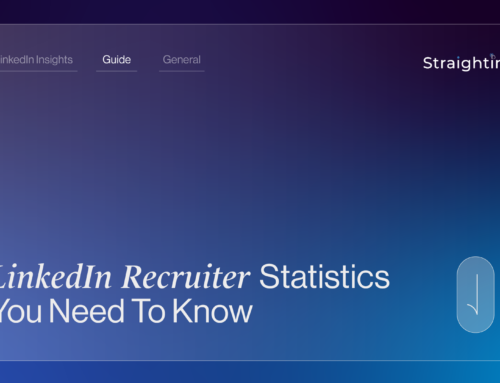It’s time to optimise your LinkedIn profile.
Looking to get found or find new talents? Join LinkedIn. Looking for new clients, partners, or investors? Join LinkedIn. Do you want to broaden your network and improve your brand? You got it. Join LinkedIn.
As more people use LinkedIn to find influencers, prospects, partners, and fresh talent for their businesses, your LinkedIn profile is more vital than ever.
Why Do You Need LinkedIn Profile Optimisation?
When you hear “SEO” or “search engine optimisation,” you most likely think of how highly your website ranks on Google. But SEO is no longer simply for your website! Indeed, once you have the know-how, it is considerably simpler and cheaper (free!) to be discovered on LinkedIn.
Identifying the proper keywords and carefully integrating them in your profile allows you to appear in both LinkedIn and Google searches. Use keywords and key phrases to help your buyers find you online, including LinkedIn profiles, content, and media.
So, how can you boost your LinkedIn profile?
This checklist can assist you in attracting the attention of recruiters on LinkedIn:
Step 1 of Optimising Your LinkedIn Profile: The Basics
When boosting your LinkedIn profile, ensure all the critical aspects are in order.
So, before you begin taking your LinkedIn profile to the next level, ensure the following fundamentals are in place:
Select an eye-catching profile photo.
When creating your profile, including a powerful and clear profile image.
Something that exposes your face assures your networks and recruiters believe in you. Follow these guidelines to create an ideal LinkedIn profile image:
- Be the only person in the photograph.
- Make sure your LinkedIn profile photo is at least 400 X 400 px in size.
- Use a backdrop that is not distracting.
- Match your profile header to your backdrop.
- At least 60% of the picture should be your face.
- Consider the Lighting: Soft, natural light is preferable.
Be creative with your headline.
In 120 characters or fewer, explain what you do in your headline. Be unique and inventive, but also clear and instructive.
Make sure to include the most relevant keywords in your headline, as this will help you get found when seeking experts in your area of speciality on LinkedIn.
Include your professional and educational experiences.
Maintain the accuracy and timeliness of these parts at all times. Include your present job, (at least) two more recent jobs, and descriptions. If you do not, your profile will be incomplete.
Step 2 of Optimising Your LinkedIn Profile: The Pro Stuff
Customise your profile URL
Customise your profile URL so that others may discover you online. In most cases, this URL contains your full name. If you have a common name, such as John Smith, you may make a slight change, such as adding a middle initial.
How to: Go to your profile and look for the “Edit public profile and URL” box in the upper-right corner. Open it by clicking it.
Again, you can alter your URL in the top right corner. This is an opportunity for you to tidy up your URL and ensure it isn’t a random string of letters and numbers created by LinkedIn.
Include Certificates
Many certification providers have made it quite simple to upload the certificate to LinkedIn, and you should investigate this option to obtain a competitive advantage.
If a talent scout, media agent, or prospect is searching for someone with Google Analytics knowledge, for example, you may stand out by displaying your certificate in the field rather than just putting Analytics as one of your abilities.
How to: Add the certificate to LinkedIn’s certifications column and enter the certificate details.
Then, in the last column, provide the certificate URL so that others may verify it if they want to. You may keep the certificate anywhere you like as long as the link makes it available to everyone.
Step 3 of Optimising Your LinkedIn Profile: SEO
Avoid using buzzwords.
To potentially stand out from the crowd, avoid using buzzwords!!
Professionals notice when individuals load their profiles with keywords like strategic, organized, motivated, focused, passionate, and creative, to name a few. Instead, do keyword research in your sector. Include them across your profile, incorporating them into your experiences, talents, and hobbies to increase your searchability.
- Use terms like cost analysis or budget planning if you work in finance.
- Try incorporating phrases like competition analysis and lead management if you work in sales and marketing.
- Check for spelling errors and broken links – these may damage your reputation!
Introduce Yourself and Your Work Using Video
You may use video in your introduction and other places on your LinkedIn profile. Video is excellent for telling stories, presenting customer testimonials, and describing what you do. Introducing oneself via a video with your face and voice makes your introduction more personal. You quickly stand out from the crowd, specially because most of your rivals do not include video.
Publish Articles
Having articles is an excellent way to increase your professional credibility and thought leadership position and explain your professional viewpoints. And, since LinkedIn articles are indexed by Google (as long as they and your profile are declared available to the public), your writing may also be discovered by search engines.
Try to write a new article every three months and ramp up your efforts if something in your industry becomes “hot” and you have specific and accurate knowledge about it.
Pro tip: Your title should not exceed 60 characters. Use relevant hashtags when you publish and promote your content on social media.
Endnote
So, there you have it: a few techniques under your sleeve to ensure you ace your LinkedIn game! You’ll get more attention, and ultimately achieve greater business outcomes if you have a complete profile, quality and diverse content, and an extensive network.
Good luck!







